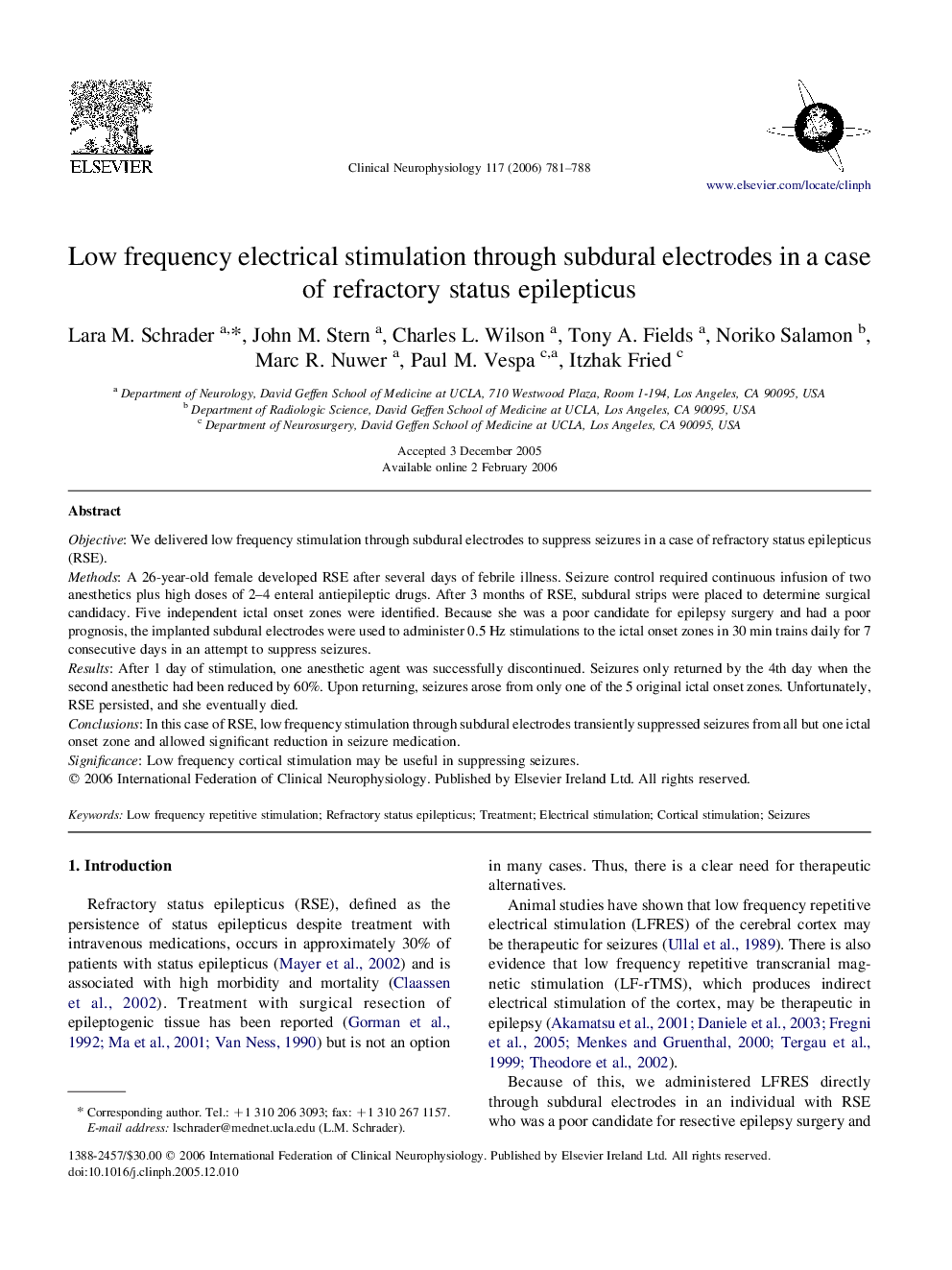| Article ID | Journal | Published Year | Pages | File Type |
|---|---|---|---|---|
| 3048234 | Clinical Neurophysiology | 2006 | 8 Pages |
ObjectiveWe delivered low frequency stimulation through subdural electrodes to suppress seizures in a case of refractory status epilepticus (RSE).MethodsA 26-year-old female developed RSE after several days of febrile illness. Seizure control required continuous infusion of two anesthetics plus high doses of 2–4 enteral antiepileptic drugs. After 3 months of RSE, subdural strips were placed to determine surgical candidacy. Five independent ictal onset zones were identified. Because she was a poor candidate for epilepsy surgery and had a poor prognosis, the implanted subdural electrodes were used to administer 0.5 Hz stimulations to the ictal onset zones in 30 min trains daily for 7 consecutive days in an attempt to suppress seizures.ResultsAfter 1 day of stimulation, one anesthetic agent was successfully discontinued. Seizures only returned by the 4th day when the second anesthetic had been reduced by 60%. Upon returning, seizures arose from only one of the 5 original ictal onset zones. Unfortunately, RSE persisted, and she eventually died.ConclusionsIn this case of RSE, low frequency stimulation through subdural electrodes transiently suppressed seizures from all but one ictal onset zone and allowed significant reduction in seizure medication.SignificanceLow frequency cortical stimulation may be useful in suppressing seizures.
